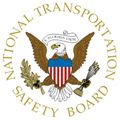
In 2001, an Airbus lost its vertical fin and crashed on Long Island; Friday, the NTSB directed Safety Recommendations to the European Aviation Safety Agency (EASA) “to ensure safe handling qualities in the yaw axis throughout the flight envelope, including limits for rudder pedal sensitivity.” The 2001 crash involved an Airbus A300, American Airlines Flight 587, and killed all 260 aboard, plus five on the ground. The NTSB determined it was caused when, as a reaction to a wake turbulence encounter, a pilot’s application of rudder led to failure of the airliner’s vertical fin. The NTSB’s new recommendations A-10-119 (PDF) and -120 and a reiteration of previously issued A-04-63 aim to create new yaw axis certification standards and review existing aircraft to determine if they meet the standard. The board directed the recommendations toward the European Aviation Safety Agency and specifically toward its certification specifications for large aircraft.
“If adequate protection does not exist,” wrote the NTSB, “EASA should require modifications, as necessary, to provide the airplanes with increased protection from the adverse effects of a potential aircraft-pilot coupling after rudder inputs at high airspeeds.” Following the crash of American Flight 587, many pilots were surprised to learn that they could break the airplane with its own controls while operating below maneuvering speed. Some pilots have opined that the debris field left in the wake of the more recent Air France Flight 447 crash, an Airbus A330, suggests that aircraft’s vertical fin was lost in flight. The A330’s control system normally places a computer between the pilot’s inputs and the aircraft’s control surfaces. A final report has not yet been presented.


































